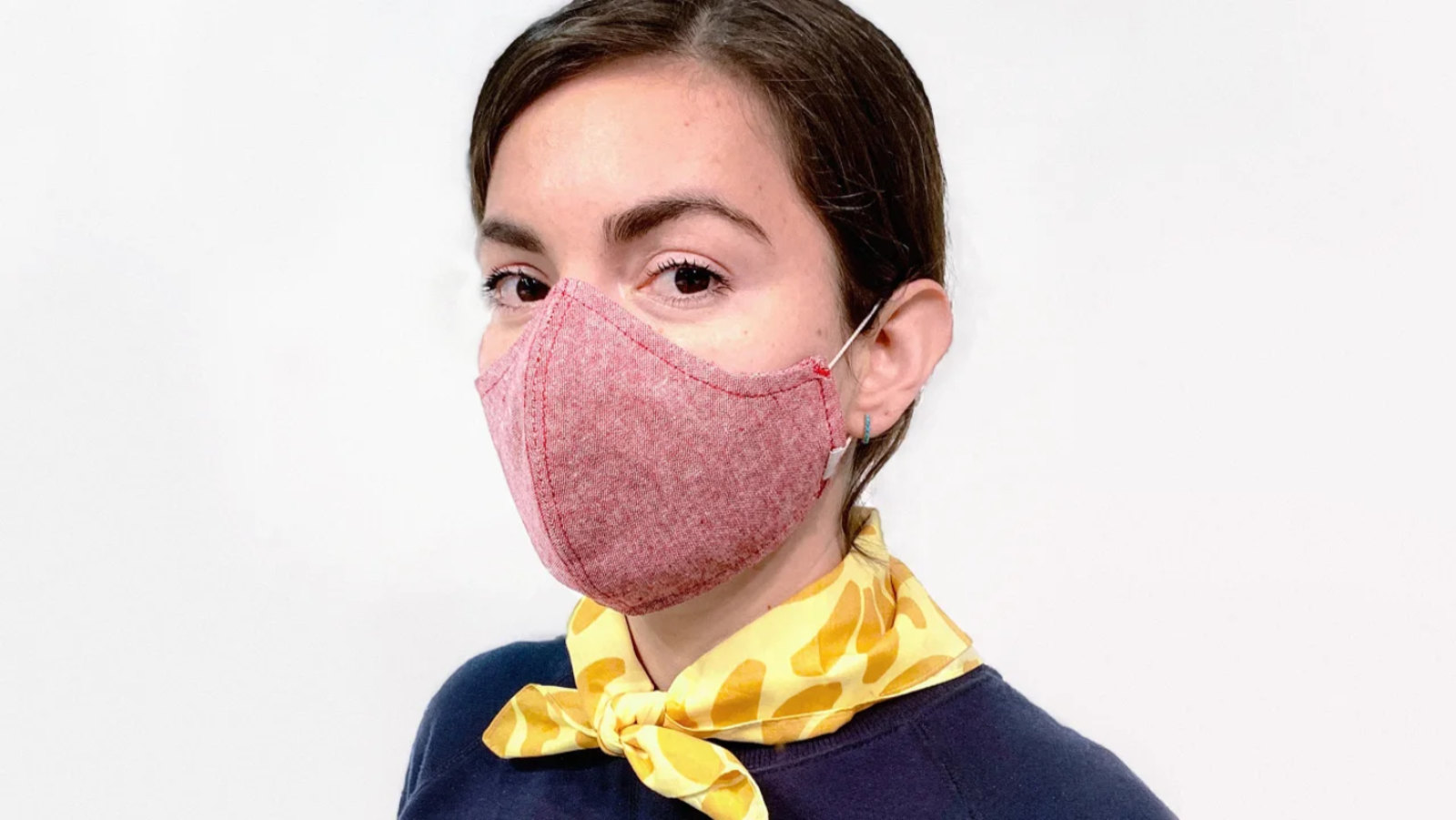
FASHION The fashion, beauty and luxury sectors respond to the COVID-19 pandemic, especially in the west, now the hardest hit part of our planet. Jack Yan looks at their activity to date
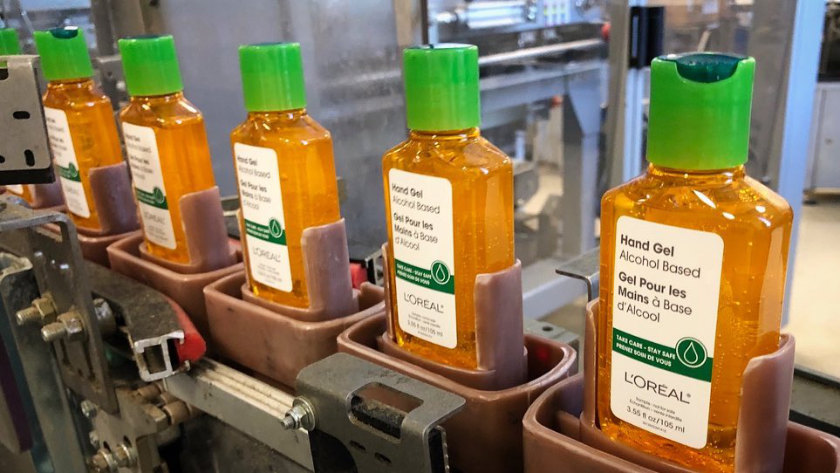

Top: Because the human race is worth it: L’Oréal has shown on its social media that it’s making hand sanitizer. Above: Christian Siriano shared this image on his Instagram as his team makes the first batch of masks in New York.
Jack Yan is publisher of Lucire.
The COVID-19 pandemic has shifted a great deal of thinking since it began reaching countries outside China in January. For a start, there has been little coverage of celebrities and what they’re doing during the pandemic, especially as regions and countries go into lockdown. Rightly so: it’s far more important we hear from experts and authoritative voices in government.
In Europe, in particular, it has forced many luxury brands to focus on what’s needed. President Emmanuel Macron of France called it a ‘guerre sanitaire’, a health war, and some companies have indeed been on a war footing, shifting their production to items that can help with fighting the COVID-19 virus.
European luxury groups Kering, Bulgari, LVMH, L’Oréal, Prada and Hermès, have each turned some of their production capacity to items that they can make during the crisis: face masks and hand sanitizers.
Kering, which encompasses, inter alia, Gucci, Alexander McQueen, Boucheron, Girard-Perregaux, Bottega Veneta, Yves Saint Laurent and Balenciaga, has donated to foundation hospitals in four Italian cities, the Hubei Red Cross Foundation and the Institut Pasteur (which is researching COVID-19). It is poised to donate 1,100,000 surgical masks and 55,000 medical overalls in Toscana, and 3 million surgical masks to the French health service. As a subsidiary, Gucci has pledged €2 million, half going to the Dipartimento della Protezione Civile (Italian Civil Protection Department) and the other half to the WHO COVID-19 Solidarity Response Fund. Saint Laurent and Balenciaga will manufacture masks.
Bulgari CEO Jean-Christophe Babin said of his company’s decision: ‘I believe as a major economic actor and symbol of Italy, Bulgari has a responsibility to contribute to the national effort to help prevent, fight and eradicate COVID-19 … Aware of the difficult situation we are experiencing, we believe it is our duty to contribute with our know-how and production facilities.’ Bulgari has switched its Lodi factory from making high-end perfumes and hotel amenities to a hand cleansing gel with sanitizer.
LVMH is using its Chinese suppliers to make 10 million surgical masks for France, and has retooled its perfumes and cosmetics’ production units to manufacture hydroalcoholic gel free of charge. The first week’s deliveries of masks has been financed by the firm at the cost of €5 million. It plans to repeat its order of masks for at least four weeks, for another 40 million masks.
L’Oréal has shifted its European production to hand sanitizer and hydroalcoholic gel, with its Garnier brand distributing the former to European clients and La Roche-Posay brand distributing the latter to ‘hospitals, nursing homes and main partnering pharmacies throughout Europe’. Its foundation, meanwhile is donating €1 million to various European non-profits who are assisting with the crisis. Its US efforts include a donation of US$250,000 to Feeding America, and matching employee donations dollar for dollar up to US$25,000. It will also use its North American production lines for alcohol-based hand sanitizer, to be donated to its US employees, partners and health care professionals. It will donate personal care and hygiene products to Feed the Children, and surgical and N95 respirator masks (which can filter out 95 per cent of airborne particles) to local hospitals. On both continents, the company will free payments of affected small businesses until they resume, and the US arm will shorten payment times to small suppliers.
Prada has been making 80,000 medical overalls and 110,000 masks in northern Italy, the country’s most affected region. It also also donated two complete intensive care and resuscitation units each to three Milanese hospitals.
Giorgio Armani has shifted to manufacturing protective equipment, and pledged to donate €2 million to the Italian Civil Protection Department as well as numerous Italian hospitals.
Versace has donated 1,000,000元 to the Chinese Red Cross, while Donatella Versace and her daughter, Allegra, have donated €200,000 personally to San Raffaele hospital in Milano.
Sergio Rossi has donated €100,000 to two Milanese hospitals, while all proceeds from its website’s sales will be donated to fight the pandemic. Ermenegildo Zegna and the Zegna family are donating €3 million to the Dipartimento della Protezione Civile, shifting production to masks, and supporting the purchase of ventilators and masks.
Ferrari, having suspended production of its cars, is making hospital respirators, assisting Siare Engineering, the main provider of the equipment in Italy, helping to double output from 150 a week to 500.
Hennes & Mauritz is making and donating personal protective equipment (PPE) and donating to the WHO fund. It is also allowing aid organizations use its social channels to reach its 120 million people. Inditex, owner of Zara, has donated 300,000 surgical masks.
In the UK, Burberry is repurposing a Yorkshire trench coat factory to make non-surgical gowns and masks, and facilitating the delivery of 100,000 surgical masks to the NHS. It is also donating to related charities and an Oxford University fund to help find a vaccine. The British Fashion Council, a non-profit organization, is making £1 million of emergency funding available to affected designer businesses and a smaller portion to students.
Ralph Lauren in the US says it will produce masks and isolation gowns for hospitals, while donating US$10 million to various causes, including the WHO fund, the Pink Pony Fund (caring for people with cancer), the Council of Fashion Designers of America (CFDA)–Vogue Fashion Fund for COVID-19 (supporting designers and others in the fashion sector affected by the pandemic), and to its own employees in special circumstances, including those with medical, elderly care, or child care needs.
Kate Spade is donating US$2 million to New York City’s small business continuity fund. New York designer Christian Siriano says he is putting his ‘full sewing team still on staff’ working from home to make masks. Being based in New York and keeping his manufacturing local, Siriano says he was in a unique position to help, and thinks he can make a thousand in a few days. Prabal Gurung plans to ‘fill the void of critical PPE’ and to get his suppliers involved, and Brandon Maxwell is doing the same to get medical gowns produced.
On the west coast (pun unintended), Kim Kardashian has used her Skims brand to do her part in corporate social responsibility, pledging to donate US$1 million. Gap, Inc. says it will also shift production at its contractors to masks, gowns and scrubs for health care workers, and connecting ppe suppliers with Californian hospital networks.
Michael Costello will make 20,000 surgical masks for distribution to hospitals and first responders in the Los Angeles area. Reformation is producing face masks for health professionals, grocery store and food delivery workers. Los Angeles Apparel is producing face masks. New Balance of Boston, Mass. is donating US$2 million through its foundation to various charities. Nike is donating over US$15 million to local communities where its employees live and work, principally in Oregon, and its foundation is donating US$1 million to the who fund.
Karla Colletto has offered its Virginia factory to help with the fight. Apron and culinary clothing manufacturer Hedley & Bennett is also producing masks. On television, Heidi Klum and Tim Gunn’s Amazon Prime video show, Making the Cut, donated US$500,000 to WHO.
Uniqlo of Japan is using its Chinese manufacturers to make 10 million masks, with a million donated to Italy and another million to its home country. It is also providing health care workers with clothing.
Mayhoola, the Qatari parent company of Valentino, Balmain and Pal Zileri, is donating €2 million in Italy.
It is not unlike manufacturers turning over their production lines to military needs during World Wars I and II, especially as lives are being lost in great numbers, particularly in Italy and Spain.
The moves make sense but they also help the profile of their brands. When the Notre-Dame cathedral suffered its devastating 2019 fire, luxury companies pledged to donate millions, but earned a great deal of criticism from some observers who felt the money could be better spent aiding the poor. In just two days, those pledges reached €900 million, leading many to question just why other major events, such as the Grenfell Tower fire or various refugee crises, could not reach the same level of support.
COVID-19 has been a far less controversial cause for companies to be seen to be involved with—and in the case of many, the virus will have directly impacted their personnel, and companies and individuals working directly with them.
The industry had already been facing some difficulties before COVID-19 hit home. Chinese consumption, logically, was substantially down, while inventory has been building up. Discounted product has also risen.
With China apparently having come out of the worst of its outbreak—though there are a number of governments sceptical of its claims—there has been some cautious spending on fashion and luxury items. However, some commentators are repeating what was covered in the April 2020 issue of Lucire KSA: that ostentatious purchases won’t be on the cards as people search for meaning. It was not an opinion that was universally shared during the global financial crisis a decade ago, nor did subsequent consumption patterns back this up, but COVID-19 has affected far more people, and in a far deeper way.
There are many companies wishing to do the right thing while people are suffering, but some might say that they have nothing to lose when the market rebounds, as the investments made here can pay off in more positive brand associations, leading to stronger brands overall. Many of these investments could have been diverted from planned marketing budgets: Ralph Lauren’s annual marketing budget is comfortably in the hundreds of millions; its US$10 million donation could be seen as a far more meaningful spend. Nike spends thousands of millions on what it calls ‘demand creation expenses’ each year; its US$15 million is a small fraction of that. Mark Zuckerberg and Priscilla Chan’s recent US$25 million donation to the crisis is substantial but it pales in comparison to Zuckerberg’s US$58,200 million personal net worth and his company’s multi-milliard spends settling lawsuits (US$5,000 million alone to pay one FTC fine in 2019).
With sales impacted massively, any expense is arguably more difficult to make, though in the case of the largest conglomerates, doing the right thing is relatively easier.
One hopes, of course, that post-COVID-19, humanity has a meaningful conversation about what matters. It seems to be a time for global cooperation, and that allowing science and medicine to transcend borders and politics can benefit all humankind. There are lessons to be learned about health, transparency, and both corporate and state responsibility. The countries and companies who chose to act quickly, early and sincerely should benefit, and join in that conversation about the betterment of our planet. •
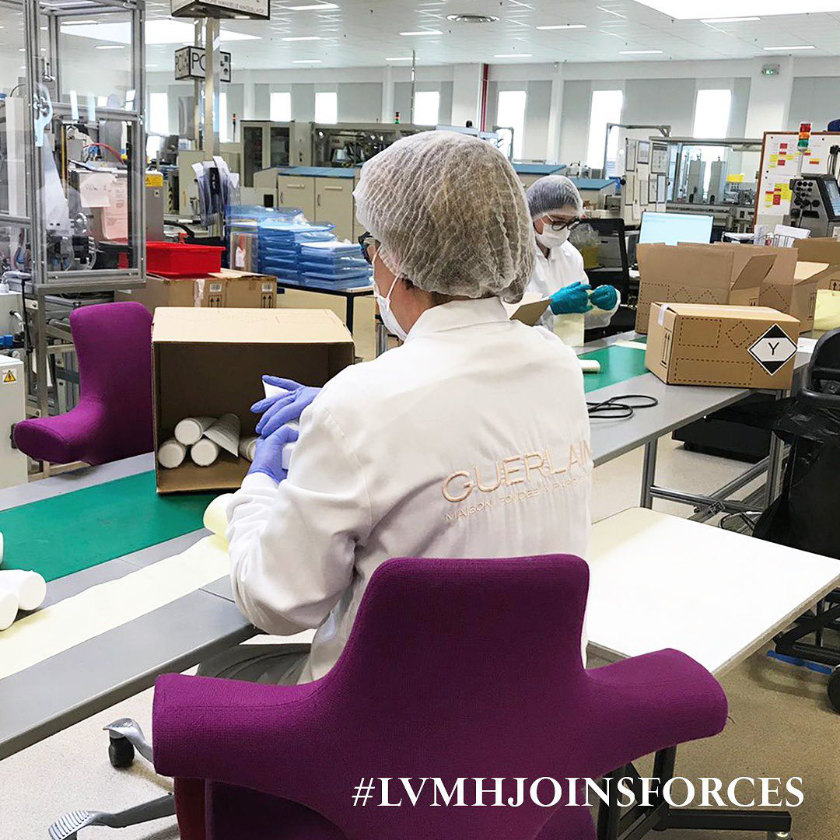 LVMH is doing its fair share with its brands going into hydroalcoholic hand sanitizer production
LVMH is doing its fair share with its brands going into hydroalcoholic hand sanitizer production
Related articles hand-picked by our editors

Escaping the black holes
Colette shut in 2017 and other retailers are either disappearing or selling up. Bhavana Bhim examines how retailers can do some soul-searching to present a more authentic face
From the May 2019 issue of Lucire KSA
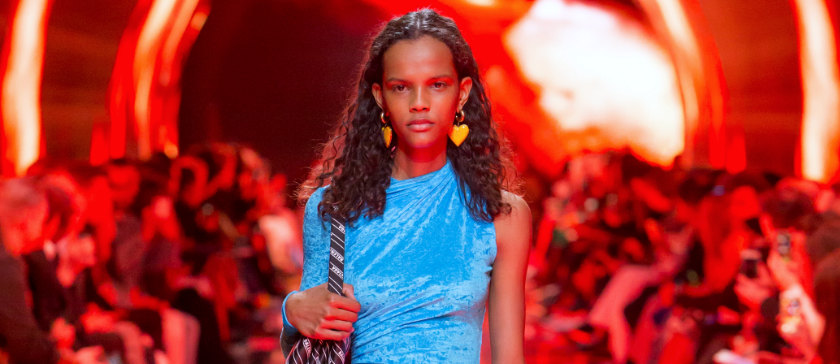
The changing of the guard
Numerous labels around the world have new talent: the second half of the decade looks very different to the first. As a result, there’s tension between past and present. Jack Yan looks at some of these labels and wonders what is the right way in 2019
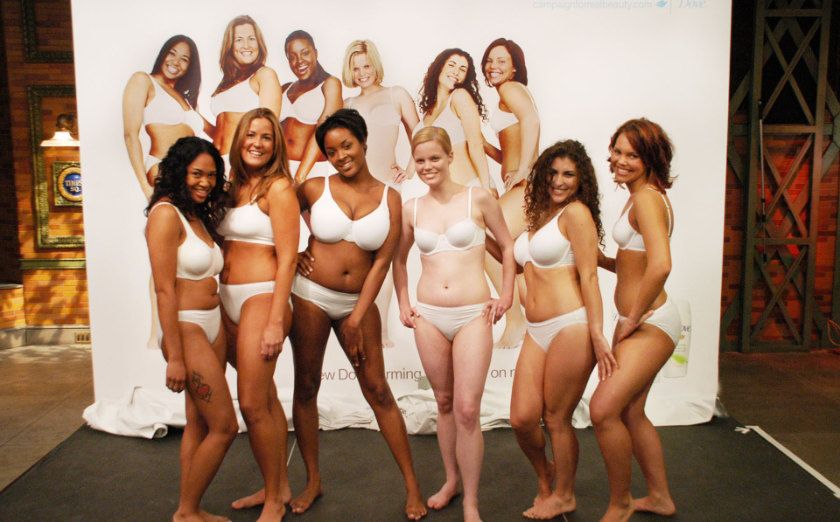
Bust–waist–hip:
the skinny on fashion’s body weight dilemma
As part of our ongoing 20th anniversary celebrations, in this special feature originally published in 2007, Summer Rayne Oakes discusses the fashion industry’s international effort to increase awareness about health and eating disorders, and the pressures of maintaining a healthy body image in the modelling industry
Catwalk photographs by Janet Liu
From issue 22 of Lucire
Advertisement
Copyright ©1997–2022 by JY&A Media, part of Jack Yan & Associates. All rights reserved. JY&A terms and conditions and privacy policy apply to viewing this site. All prices in US dollars except where indicated. Contact us here.